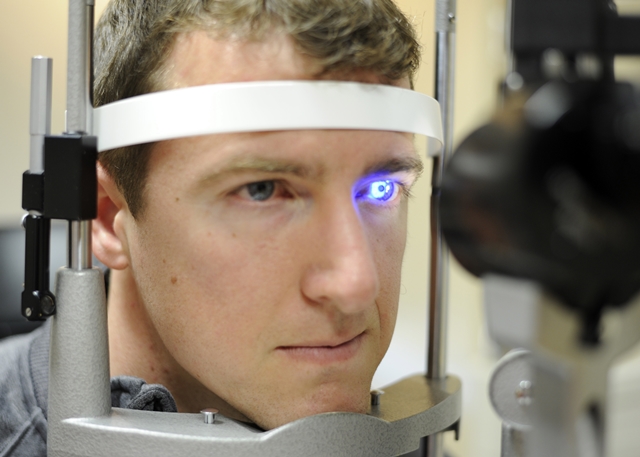10 Jan. 2018. A medical school eye clinic is asking clinicians and patients to wear radio-frequency tags that track their time and movements to improve the clinic’s efficiency and quality of care. The project is a partnership between the Kellogg Eye Center at University of Michigan medical school and the school’s Center for Healthcare Engineering and Patient Safety, or CHEPS, both in Ann Arbor.
Radio frequency identification, or RFID tags, often printed on plastic, are used in a wide range of industries, particularly in retail stores and supply chain. RFID tags contain identifying and other product data — e.g., size, price, color, location — in a standardized format, which respond to UHF radio signals sent from and transmitted back to a reading device. These so-called passive RFID tags require no additional power source, but respond to electromagnetic signals from the reader on demand.
Michigan’s eye clinic is trying RFID tags as a way to reduce wait times by patients and make optimum use of clinicians’ time with patients. In the project, doctors, ophthalmic technicians, and medical assistants in the clinic as well as more than 2,000 patients are wearing the tags with unique identifiers. “Good decision-making depends on good data,” says Amy Cohen, associate director of CHEPS in a university statement, “and RFID tags enabled us to get up-to-the-second granular data to truly understand how patients and providers move through the clinic.” Cohn is also a professor of industrial and operations engineering at Michigan.
The more granular data are being translated into a statistical model that the clinic uses to experiment with different staffing patterns and operations to improve delivery and reduce patient waiting times. For patients, visits to the clinic can be lengthy experiences, with waiting times between different examinations. The model, which the school says predicts patient waiting times with 80 percent accuracy, highlights opportunities for clinicians to conduct patient counseling and education.
This need to better integrate education into patients’ visits is considered essential to improve their health outcomes, and was an original objective of the project. “We were trying to understand how to better integrate education into the glaucoma clinic visit,” says Paula Anne Newman-Casey, a professor of ophthalmology at Michigan. “And it took on a life of its own.”
A continuing problem with glaucoma care, says Newman-Casey, is getting patients to take their medications. Glaucoma is a collection of eye conditions resulting in damage to the optic nerve that in advanced stages can lead to vision loss. In most cases of glaucoma, abnormally high intraocular pressure in the eye results in the optic nerve damage. In the U.S., according to the Glaucoma Research Foundation, some 3 million individuals have glaucoma, making it a leading cause of blindness.
“We hope to schedule patients in a more respectful way,” adds Newman-Casey, “that acknowledges the complexity that goes into glaucoma care and recognizes the burden on patients of managing a chronic disease.” The eye clinic says with RFID tags it already is able to treat more patients without increasing their waiting times.
More from Science & Enterprise:
- AI, Wearables Posing Health Privacy Risks
- Bluetooth Data Added to Ingestible Capsules
- Self-Powered Sun Exposure Chip, App Developed
- Personalized Computer Models Developed for Heart Disease
- Vital Signs Electronic Tag Designed to Aid First Responders
* * *


 RSS - Posts
RSS - Posts
[…] Electronic Tags Assessed to Boost Clinic Care […]